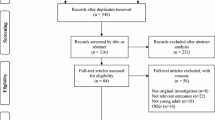Abstract
Owing to changes in cardiac output, blood volume distribution and the efficacy of the muscle pump, oxygen supply may differ during upright and supine cycle exercise. In the present study we measured, in parallel, circulatory (heart rate, stroke volume, blood pressure) and metabolic parameters (oxygen uptake, lactic acid concentration [1a]) during incremental-exercise tests and at constant power levels ranging from mild to severe exercise. In supine position, cardiac output exceeded the upright values by 1.0-1.5 1 · min−1 during rest, light ([la] < 2 mmol · 1−1) and moderate ([la] =2–4 mmol · 1−1) exercise. At higher exercise intensities the cardiac output in an upright subject approached and eventually slightly exceeded the supine values. For both rest-exercise transitions and large-amplitude steps (ΔW ⩾ 140 W) the cardiac output kinetics was significantly faster in upright cycling. The metabolic parameters (VO2 and [la]) showed no simple relationship to the circulatory data. In light to moderate exercise they were unaffected by body position. Only in severe exercise, when cardiac output differences became minimal, could significant influences be observed: with supine body posture, [la] started to rise earlier and maximal power (ΔW=23 W) and exercise duration (64 s) were significantly reduced. However, the maximal [la] value after exercise was identical in both positions. The present findings generally show advantages of upright cycling only for severe exercise. With lower workloads the less effective muscle pump in the supine position appears to be compensated for by the improved central circulatory conditions and local vasodilatation.
Similar content being viewed by others
References
Astrand P-O, Cuddy E, Saltin B, Stenberg J (1964) Cardiac output during submaximal and maximal work. J Appl Physiol 19:268–274
Baum K, Eßfeld D, Stegemann J (1990) Reduction in extracellular muscle volume increases heart rate and blood pressure response to isometric exercise. Eur J Appl Physiol 60:217–221
Bevegard S, Holmgren A, Jonsson B (1960) The effect of body position on the circulation at rest and during exercise, with special reference to the influence of stroke volume. Acta Physiol Scand 49:279–298
Bevegard S, Freyschuss U, Strandell T (1966) Circulatory adaptation to arm and leg exercise in supine and sitting position. J Appl Physiol 21:37–46
Cerretelli P, Pendergast D, Marconi C, Piiper J (1986) Blood flow in exercising muscles. Int J Sports Med 7:29–33
Christie J, Sheldahl LM, Tristiani FE, Sagar KB, Ptacin MJ, Sann S (1987) Determination of stroke volume and cardiac output during exercise: comparison of two-dimensional and Doppler echocardiography, Fick oximetry, and thermodilution. Circulation 76:539–547
Convertino VA, Goldwater DJ, Sandler H (1984) Oxygen uptake kinetics of constant-load word: upright vs. supine exercise. Aviat Space Environ Med 55:501–506
Donald KW, Wormald PN, Taylor SH, Bishop JM (1957) Changes in the oxygen content of femoral venous blood and leg blood flow during leg exercise in relation to cardiac output response. Clin Sci 16:567–591
Eßfeld D, Hoffmann U, Stegemann J (1987)VO2 kinetics in subjects differing in aerobic capacity: investigation by spectral analysis. Eur J Appl Physiol 56:508–515
Eßfeld D, Baum K, Stegemann J (1988) Local fluid losses enhance heart rate drives in light to moderate exercise. Aviat Space Environ Med 59:1055–1060
Eßfeld D, Baum K, Hoffmann U, Stegemann J (1993) Effects of microgravity on interstitial muscle receptors affecting heart rate and blood pressure during static exercise. Clin Invest 71 (in press)
Hughson RL, Xing HC, Borkhoff C, Butler GC (1991) Kinetics of ventilation and gas exchange during supine and upright bicycle exercise. Eur J Appl Physiol 63:300–307
Huntsman LL, Stewart DK, Barnes SR, Franklin SB, Colocousis JS, Hessel EA (1983) Noninvasive Doppler determination of cardiac output. Circulation 67:593–602
Leyk D, Eßfeld D, Hoffmann U, Baum K, Stegemann J (1992) Influence of body position and pre-exercise activity on cardiac output and oxygen uptake following step changes in exercise intensity. Eur J Appl Physiol 65:499–506
Loeppky JA, Greene ER, Hoekenga DE, Caprihan A, Luft UC (1981) Beat-by-beat stroke volume assessment by pulsed Doppler in upright and supine exercise. J Appl Physiol 50:1173–1182
Reeves JT, Grover RF, Blount SG, Filley GF (1961) Cardiac output response to standing and treadmill walking. J Appl Physiol 16:283–288
Stegall HF (1966) Muscle pumping in the dependent leg. Circ Res 19:180–190
Stegemann J (1976) Rechnergesteuerte Spiroergometrie nach der Methode der Einzelatemzuganalyse. Sportarzt Sportmed 27:1–7
Stenberg J, Astrand P-O, Ekblom B, Royce J, Saltin B (1967) Hemodynamic response to work with different muscle groups, sitting and supine. J Appl Physiol 22:61–70
Weiler-Ravell D, Cooper DM, Whipp BJ, Wasserman K (1983) Control of breathing at the start of exercise as influenced by posture. J Appl Physiol 55:1460–1466
Author information
Authors and Affiliations
Rights and permissions
About this article
Cite this article
Leyk, D., Eßfeld, D., Hoffmann, U. et al. Postural effect on cardiac output, oxygen uptake and lactate during cycle exercise of varying intensity. Europ. J. Appl. Physiol. 68, 30–35 (1994). https://doi.org/10.1007/BF00599238
Accepted:
Issue Date:
DOI: https://doi.org/10.1007/BF00599238




